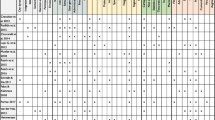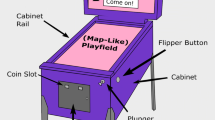Abstract
This chapter concentrates on the implementation of the geogame GeoMinasCraft and its use for geographical virtual explorations. The game was implemented to study the use of geospatial data for the visualizations of landscapes in a serious game. The users/players can take on an adventure, explore the landscapes, learn about geodiversity, and face different challenges. The game takes us to the City of Ouro Preto in Minas Gerais in Brazil. The city was selected due to its historical significance and socio-cultural values. We used satellite images and transformed them into blocks imitating these real-world landscapes and cities in Minecraft. We tested the game prototype with nine students which gave us the needed feedback for the improvements of the first prototype. This chapter summarizes the game concept, its implementation, and the testing results. We conclude the chapter with a discussion and further research directions.
Access this chapter
Tax calculation will be finalised at checkout
Purchases are for personal use only
Similar content being viewed by others
References
Ahlqvist O (2011) Converging themes in cartography and computer games. Cartogr Geogr Infor Sci 38(3):278–285. https://doi.org/10.1559/15230406382278
Ahlqvist O, Schileder C (2018) Geogames and geoplay. In: Ahlqvist O, Schlieder C (eds) Orgs. https://doi.org/10.1007/978-3-319-22774-0
Anderson EF, McLoughlin L, Liarokapis F, Peters C, Petridis P, de Freitas S (2010) Developing serious games for cultural heritage: a state-of-the-art review. Virt Real 14(4):255–275. https://doi.org/10.1007/s10055-010-0177-3
Bartle R (1996) Hearts, clubs, diamonds, spades: players who suit muds. J MUD Res
Bartle R (2005) Virtual worlds: why people play. Massively Multipl Game Devel 2(2November):3–18. Recuperado de. http://www.mud.co.uk/richard/VWWPP.pdf
Callaghan N (2016) Investigating the role of Minecraft in educational learning environments. Educ Media Int 53(4):244–260. https://doi.org/10.1080/09523987.2016.1254877
de Andrade BA, Poplin A, de Sena ÍS (2020) Minecraft as a tool for engaging children in urban planning: a case study in tirol town Brazil. ISPRS Int J Geo-Inf 9(3):170. https://doi.org/10.3390/ijgi9030170
de Costa SAP, Castriota LB, Salgado M (2011) The World Heritage site of Ouro Preto. Facilities 29(7/8):339–351. https://doi.org/10.1108/02632771111130942
de Sena ÍS (2019) Visualização e valorização da paisagem a partir de geogame. Universidade Federal de Minas Gerais
de Sena ÍS, de Andrade BA (2018) PampulhaCraft: Modelling the cultural landscape in Minecraft as learning proccess in archtecture and planning in Brazil. Geogr y Sist Inf Geográfica (GEOSIG) 11:1–22
de Sena ÍS, Fonseca BM, de Andrade BA, Moura ACM (2018) Minecraft como ferramenta de visualização e interpretação da paisagem de interesse para a geodiversidade de Minas Gerais–MG. Rev Geogr 35, 120. https://doi.org/10.51359/2238-6211.2018.238210
Devisch O, Poplin A, Sofronie S (2016) The gamification of civic participation: two experiments in improving the skills of citizens to reflect collectively on spatial issues. J Urban Technol 23(2):81–102. https://doi.org/10.1080/10630732.2015.1102419
Elmerghany AH, Paulus G (2017) Using minecraft as a geodesign tool for encouraging public participation in urban planning. GI_Forum 1(2):300–314. https://doi.org/10.1553/giscience2017_01_s300
Formosa S (2014) Neogeography and preparedness for real-to-virtual world knowledge transfer: conceptual steps to minecraft malta. Future Int 6(3):542–555. https://doi.org/10.3390/fi6030542
Formosa S (2015) Visualizing visualisation: spatial conceptualisation as a stepping stone in the transition of real-virtual world interactionism. Cult Map Debat Cult Spaces Places (November) 6. https://doi.org/10.13140/RG.2.1.4142.2806
Fullerton T (2014) Game design workshop: a playcentric approach to creating innovative games (3rd ed). Recuperado de. https://vk.com/gamedizain
Gray M (2013) Geodiversity: valuing and conserving abiotic nature. Recuperado de. http://books.google.com/books?id=LSB8AAAAQBAJ&pgis=1
Gray M (2018) The confused position of the geosciences within the “natural capital” and “ecosystem services” approaches. Ecosyst Serv 34(October):106–112. https://doi.org/10.1016/j.ecoser.2018.10.010
Hjort J, Gordon JE, Gray M, Hunter ML (2015) Why geodiversity matters in valuing nature’s stage. Conserv Biol 29(3):630–639. https://doi.org/10.1111/cobi.12510
Jenkins H (2004) Game design as narrative architecture. In: Wardrip-Fruin N, Harrigan P (eds) Orgs. First person: new media as story, performance, game. MIT Press, Cambridge, pp 1–15
Lecordix F, Fremont D, Jilani M, Séguin E, Kriat S (2018) Minecraft on demand−a new IGN service which combines game and 3D cartography. Proc ICA 1:1–5. https://doi.org/10.5194/ica-proc-1-65-2018
Linowes J (2015) Unity virtual reality projects−explore the world of virtual reality by building immersive and fun VR projects using Unity 3D. Recuperado de. http://www.worldcat.org/title/unity-virtual-reality-projects-explore-the-world-of-virtual-reality-by-building-immersive-and-fun-vr-projects-using-unity-3d/oclc/961514719?referer=di&ht=edition
Lynch K (1960) The image of the City. https://doi.org/10.1109/CSIE.2009.895
McDaniel T (2018) Block by block: the use of the video game “Minecraft” as a tool to increase public participation. Texas State University
MCEdit (2019) About MCEdit 2.0. Recuperado 27 de setembro de 2019, de Features website. https://www.mcedit.net/about.html
Miklós L, Kočická E, Izakovičová Z, Kočický D, Špinerová A, Diviaková A, Miklósová V (2019) Landscape as a Geosystem. https://doi.org/10.1007/978-3-319-94024-3
Pepsoft (2019) WorldPainter. Recuperado 27 de setembro de 2019, de About website. https://www.worldpainter.net/
Poplin A (2012) Playful public participation in urban planning: a case study for online serious games. Comput Environ Urban Syst 36(3):195–206. https://doi.org/10.1016/j.compenvurbsys.2011.10.003
Poplin A (2014) Digital serious game for urban planning: “B3—Design your marketplace!”. Environ Plan 41(3):493–511. https://doi.org/10.1068/b39032
Poplin A, Kerkhove T, Reasoner M, Roy A, Brown N (2017) Serious GeoGames for civic engagement in urban planning: discussion based on four game prototypes. In: Routledge research in planning and urban design (Org.), The virtual and the real in planning and urban design: perspectives, practices and applications. Routledge, London, pp. 189–212
Scholten H, Fruijtier S, Dias E, Hettinga S, Opmeer M, Leeuwen WS, van Fruijtier C (2017) Geocraft as a means to support the development of smart cities, getting the people of the place involved−youth included. Qual Innov Prosp 21(1):119. https://doi.org/10.12776/qip.v21i1.784
Sharples C (1993) A methodology for the identification of significant landforms and geological sites for geoconservation purposes. Tasmania, Australia
Ugwitz P, Juřík V, Herman L, Stachoň Z, Kubíček P, Šašinka Č (2019) Spatial analysis of navigation in virtual geographic environments. Appl Sci 9(9):1873. https://doi.org/10.3390/app9091873
Acknowledgements
The authors thank the support from the support of CAPES, through the Overseas Sandwich Doctoral Program, under process 88881.189217/2018–1, and contributed to the CNPq research ‘Geodesign and parametric modeling of territorial occupation: Geoprocessing for a proposal for a Master Landscape Plan for the Quadrilátero Ferrífero-MG Region’, Process 401066/2016–9, Edital Universal 01/2016.
This work is also supported from Operational Programme Research, Development and Education—Project “Postdoc2MUNI” (No. CZ.02.2.69/0.0/0.0/18_053/0016952).
We thank the Safe Software Grant Program for making the FME software available for the development of the game.
Author information
Authors and Affiliations
Corresponding author
Editor information
Editors and Affiliations
Rights and permissions
Copyright information
© 2021 The Author(s), under exclusive license to Springer Nature Switzerland AG
About this chapter
Cite this chapter
de Sena, Í.S., Poplin, A., de Andrade, B. (2021). GeoMinasCraft: A Serious Geogame for Geographical Visualization and Exploration. In: Geertman, S.C.M., Pettit, C., Goodspeed, R., Staffans, A. (eds) Urban Informatics and Future Cities. The Urban Book Series. Springer, Cham. https://doi.org/10.1007/978-3-030-76059-5_30
Download citation
DOI: https://doi.org/10.1007/978-3-030-76059-5_30
Published:
Publisher Name: Springer, Cham
Print ISBN: 978-3-030-76058-8
Online ISBN: 978-3-030-76059-5
eBook Packages: Earth and Environmental ScienceEarth and Environmental Science (R0)




